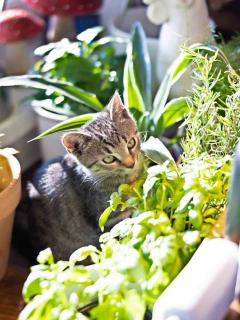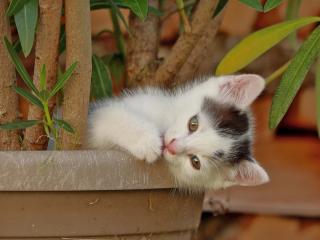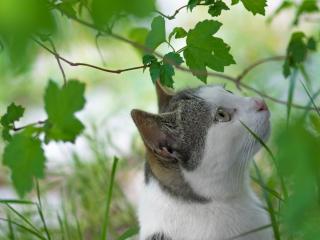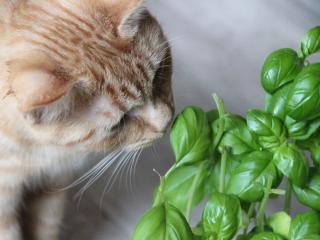

Cats have an annoying habit of gnawing on plants because that usually helps with digestion. Sometimes it’s even just out of boredom, or for the sake of scratching the earth or sharpening claws. Berries, leaves, stems, sap… It turns out quite a few plants are deadly poisons! They can have severe consequences for animals, especially cats. Read on to discover which toxic plants to avoid if you have a cat!
This list isn’t all-inclusive, but it brings together 5 common plants that bode ill to our feline friends. In most cases, they just cause stomach aches and diarrhea.
But for some, heart and neurological disorders are the consequence of cats eating them!

If your cat ingests certain varieties of philodendron, it could suffer from poisoning causing respiratory and digestive problems, bleeding, diarrhea, or even vomiting.
The ficus is one of the most common plants in our homes. Be it touch or ingestion, your cat could experience vomiting, stomach burns, diarrhea, oral lesions, kidney damage, or even facial swelling.
With its tropical vibe, yucca easily fits into the house. Yet, it’s clearly on the no-go list for cat owners. It causes colic, hypothermia, and excessive salivation. In rare cases, it even leads to paralysis of the hind legs and coma.
Trendy caladium, with its large decorative leaves, should be kept away from cats. It can can cause skin and mucous membrane irritations.
If your cat is lucky enough to have outdoor access, it’ll undoubtedly be tempted to nibble on every plant in the garden! Here are 5 plants to avoid outdoors.

It adorns heather soils with its large, bright and colorful flowers. However, rhododendron should be avoided due to its digestive, cardiac and neurological toxicity. The same goes for azalea.
The star of May can cause excessive salivation, diarrhea, seizures, and tremors. Beware of the water in the vase which is also toxic.
→ You might find this interesting: safe ways to grow lily of the valley
These two bulbs, tulip and hyacinth, cause irritations in the mouth, digestive system, and skin.


Maybe your plants aren’t toxic. But you still might not want your cat wrecking them.
You’ll need to get crafty to keep that little furball away…
Note that for both of these (citrus rinds and pepper), you’ll need to reapply more every now and then to maintain effectiveness.